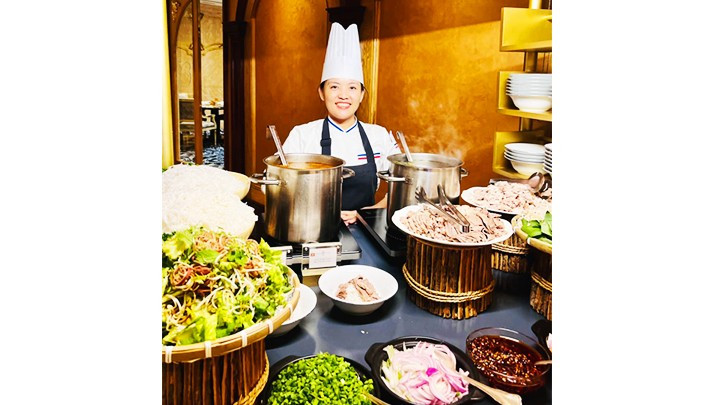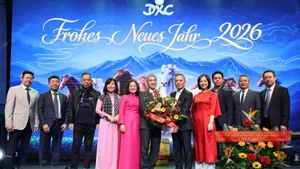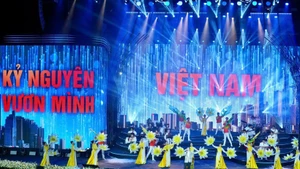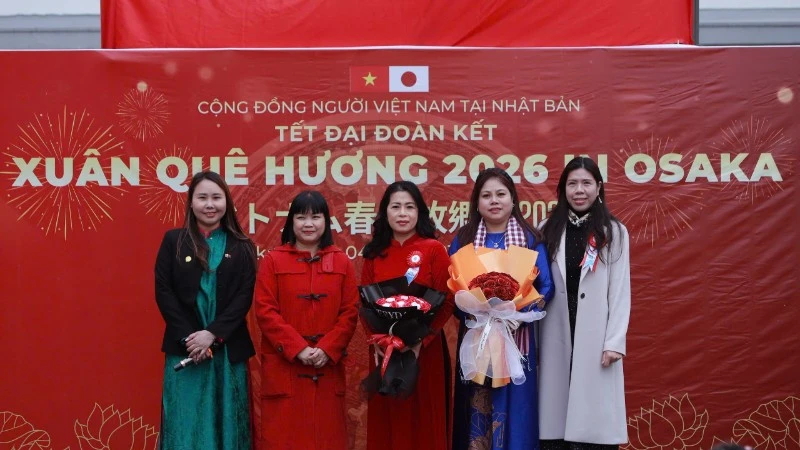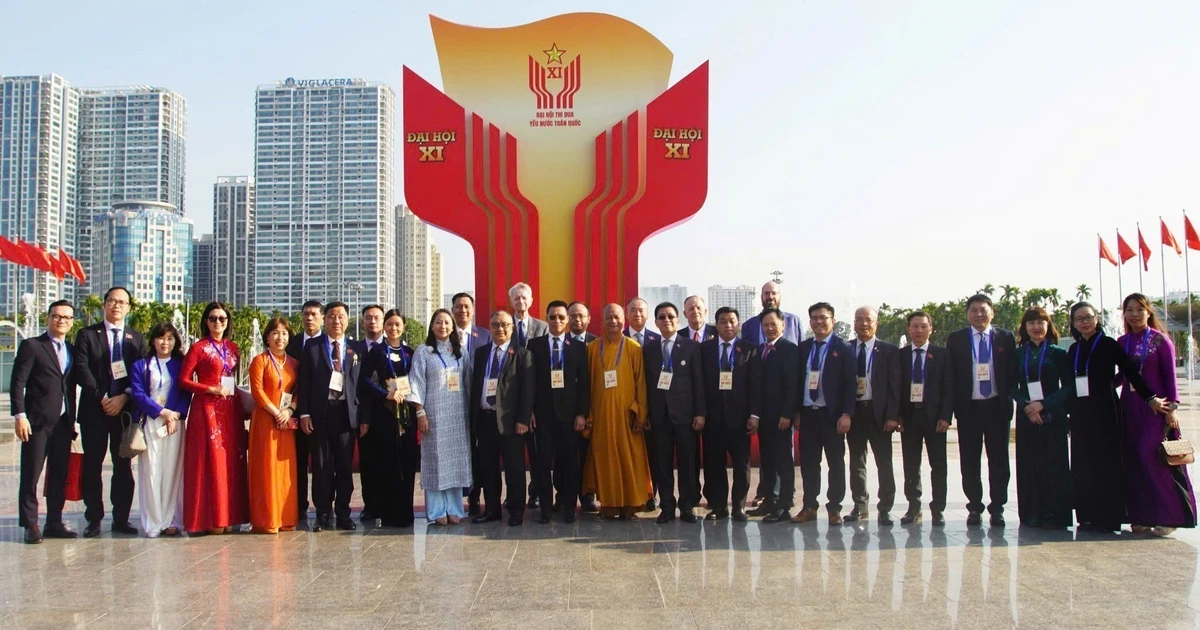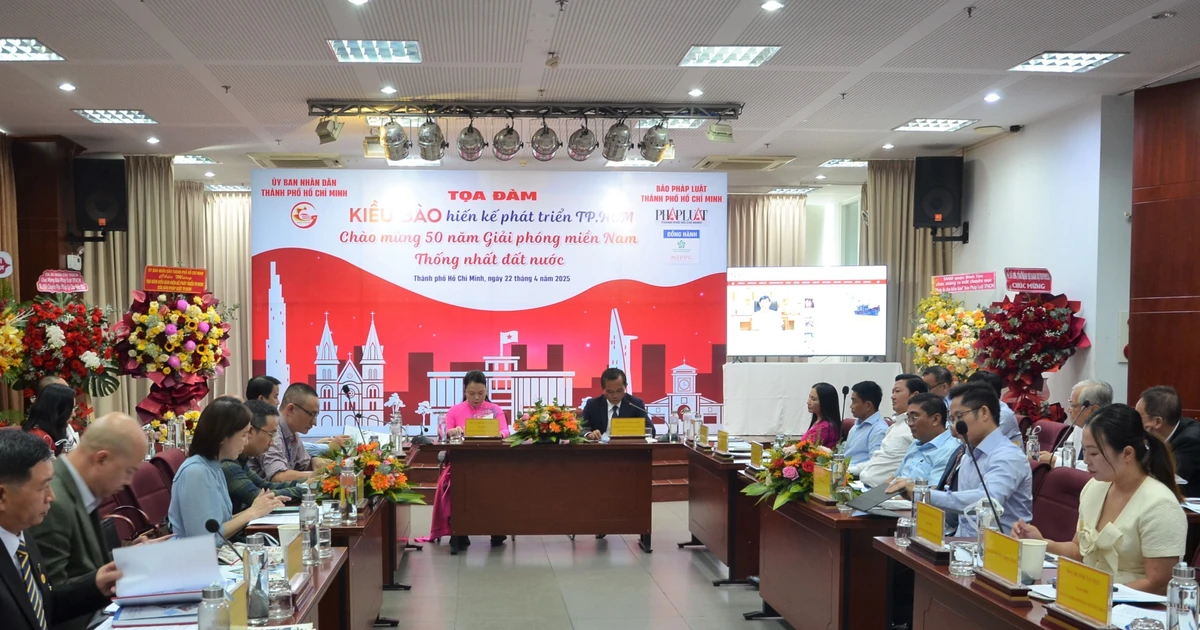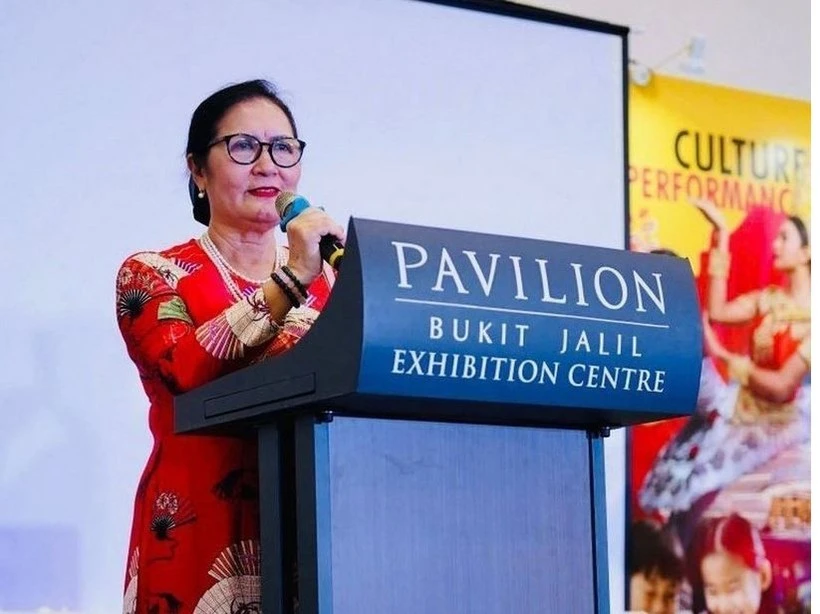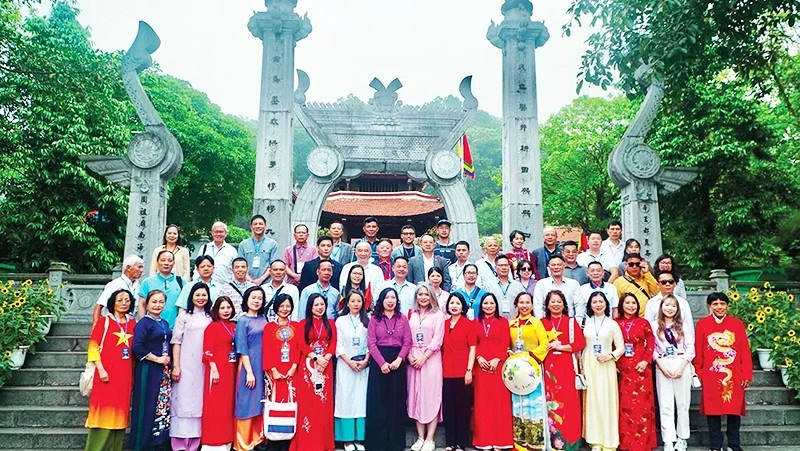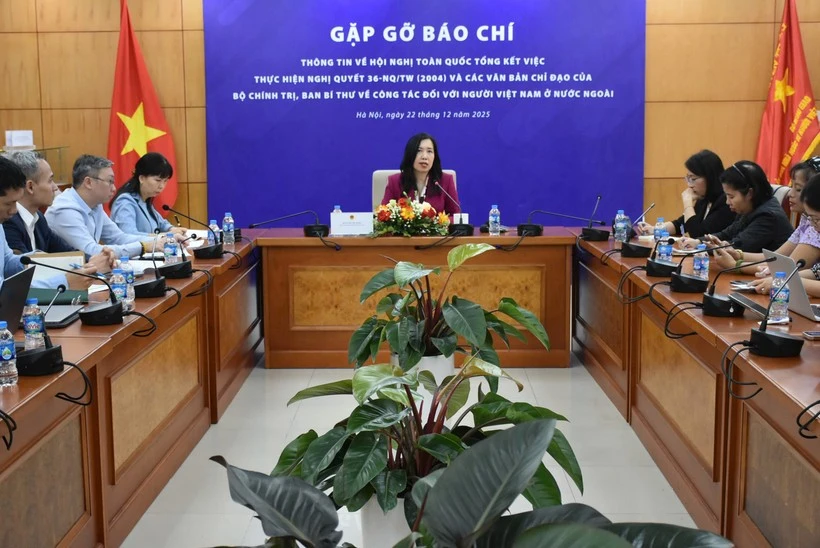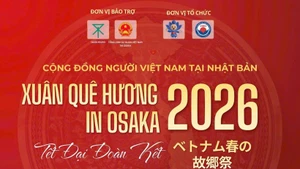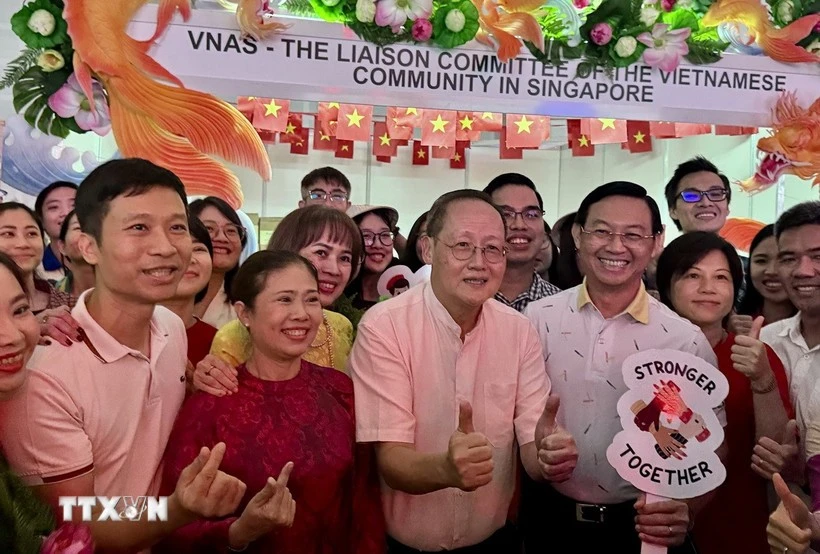Inspiring people
In 2022, artisan Vo Quoc participated in the selection of 100 Vietnamese delicacies in the southern region, which was initiated by the Vietnam Culinary Culture Association (VCCA). His presence inspired foodies. Quoc won the gold prize at the Asian Job Express in Beijing (China), but his dream of becoming a chef had to be shelved because his family did not want him to follow this profession. However, his passion draws him to work as a Food Stylist who wrote articles for food magazines. In 2006, he was invited by Yahoo to Singapore to cook a banquet for the guests of the country’s government. He asked artisan Ho Thi Hoang Anh how to cook Hue beef noodle soup and some cakes. Impressively, Hue beef noodle soup, with the recipe of artisan Ho Thi Hoang Anh, is favoured by Singaporean Prime Minister Lee Kuan Yew. The PM invited Quoc to Singapore to cook for banquets from 2006 to 2012. His dishes in the foreign countries were all Vietnamese. Quoc was awarded the title of "Ambassador of Vietnamese cuisine and culture" by the World Chefs Association.
 |
| Artisans Le Van Khanh and Le Van Thanh in Thailand |
After that glorious trip abroad, Hue beef noodle soup was put on the menu at nearly 40 schools in Saijo City, Ehime Province (Japan) in May 2022. This dish also appeared in many diplomatic parties and tourism promotion conferences in foreign countries.
In the North, artisans Le Van Khanh and Le Thi Thiet are involved in the jury to select 100 delicious dishes. At the end of September 2002, they worked with artisan Le Van Thanh to promote Vietnamese traditional cuisine in Bangkok (Thailand) to the delight of diners. More than 1,000 guests from the government, diplomatic delegations and businesses of Thailand at the three parties praised the uniqueness of Vietnamese dishes. They were Hanoi’s 'bun cha' (rice noodles with grilled pork), crab spring rolls, ‘pho tron’ (mixed noodles), ‘cha com’ (Vietnamese pork sausage with green rice), chicken steamed with lotus leaves, sticky rice with pork belly and longan lotus sweet soup. As the main chef, Le Van Khanh also impressed diners with his menu of 16 high-quality and nutritious stews that have been considered the famous "delicious" of the royal court. He is also the author of the brand of pho bat da 37 (noodle in stone bowl) and ca lang (hemibagrus) braised with ancient tea leaves that are popular in Vietnam.
In another journey, artisan Tran Ngoc Nghia, a runner-up of the 2004 Golden Spoon Contest and artisan Le Hong Chien, General Chef of Midtown Hue Hotel, participated in a journey to open the door to Vietnam by cuisine in Kuwait. After a month of promoting Vietnamese cuisine in Kuwait, the girl from Vietnam’s Dong Nai Province did not expect her dishes to gain such favour. In addition to Hanoi noodle soup, Hue beef noodle soup, shrimp spring rolls from the south and a series of royal dishes from Hue, Ngoc Nghia did not forget to treat diners to the dishes associated with her name, such as pomelo salad and pomelo sweet soup. Nghia also touched diners with the story about the dishes associated with her homeland's specialty of pomelo.
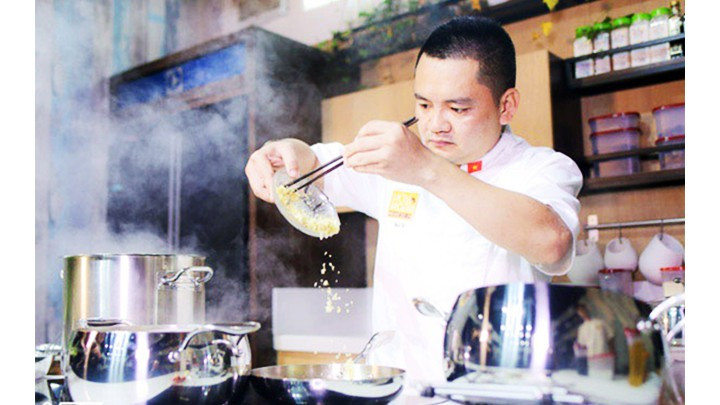 |
| Artisan Vo Quoc |
Not just delicious food
Once, I and Doctor of History Nguyen Nha, who has always aspired to bring Vietnamese kitchens to the world, visited artisan Anh Tuyet. On the second floor of the House No.25 on Ma May Street, Hanoi, the artisan presented a tray of the standard dishes for the ancient Tet (Lunar New Year) Festival to treat the guests. They were gio cha (pork pie), papaya salad, banh chung (square glutinous rice cake), salted onions, stewed bamboo shoots with pork feet and duck stewed with lotus seeds. And then nostalgia rushed back with the memories about the ancient Tet.
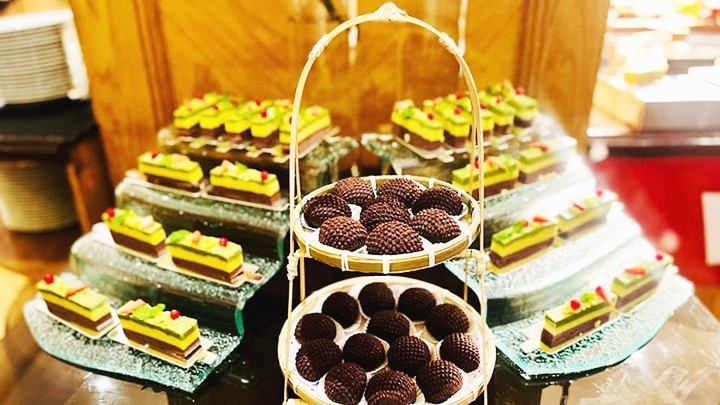 |
| Vietnamese cakes promoted at an event in Kuwait |
The way made by the artisans to “conquer” diners is not only the display of a delicious dish but also evoking and inspiring diners to learn the cultural elements contained in each dish. Therefore, it is necessary to build a story for each dish so that the distillation of words and the simplicity of interpretation is the key to decipher the mysteries of indigenous culture. Artisan Le Van Khanh said: “Vietnamese cuisine is associated with the culture of the country with thousands of years of civilisation. The weather has four seasons, so cuisine also needs to be appropriate. The law of nature has five elements so is the cuisine”.
Cuisine contains the elements of history, culture, beliefs, soil, talents and concept of life of each individual. Preserving traditional dishes s through restoration, standardisation and preservation is a way to introduce diners to the depth of a culture. The creation of a new dish is a journey that Vietnamese culinary artisans expand the range of the Vietnamese culinary map to position a country that has diverse ingredients, is creative and always makes surprises for those who want to explore Vietnamese culture.
The brand of each culinary artist is built from the perspective of making a difference in their dishes. Artist Ho Dac Thieu Anh, the author of the favourite macrobiotic vegetarian dishes, affirmed that the difference of the dishes promoted by her is "cooking well and eating well". They were processed from natural and sufficient plant sources that balance yin and yang and harmonise the five elements.
